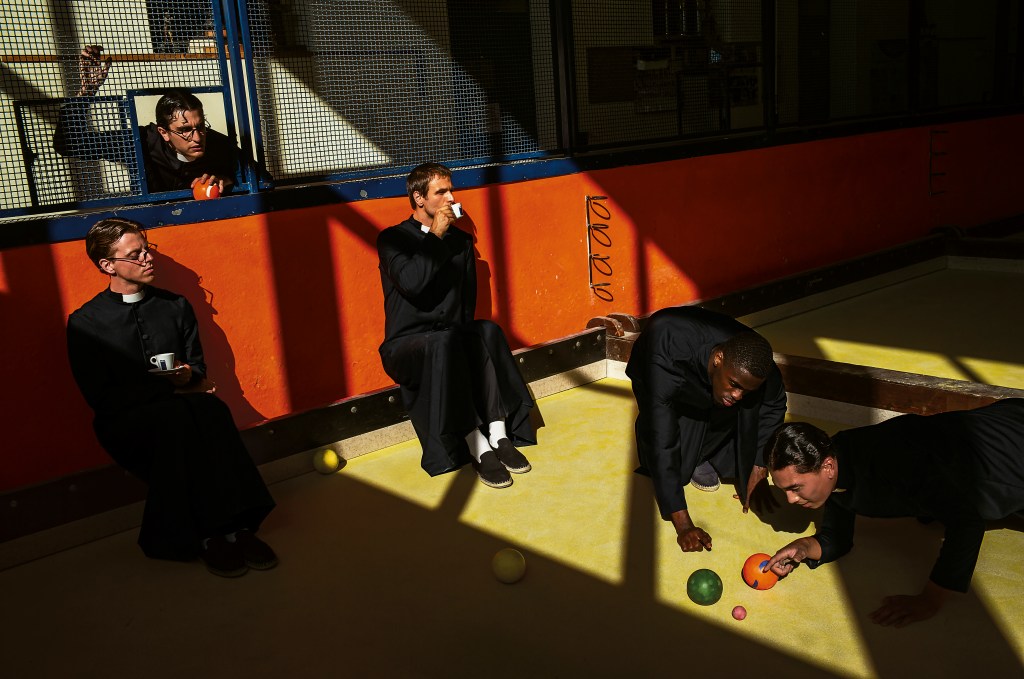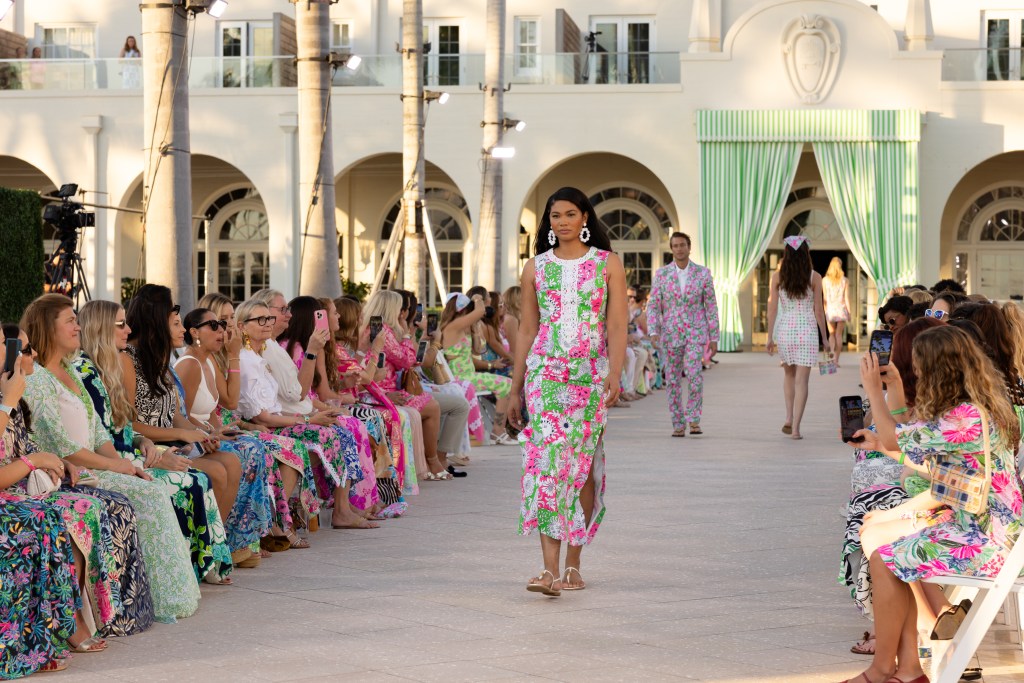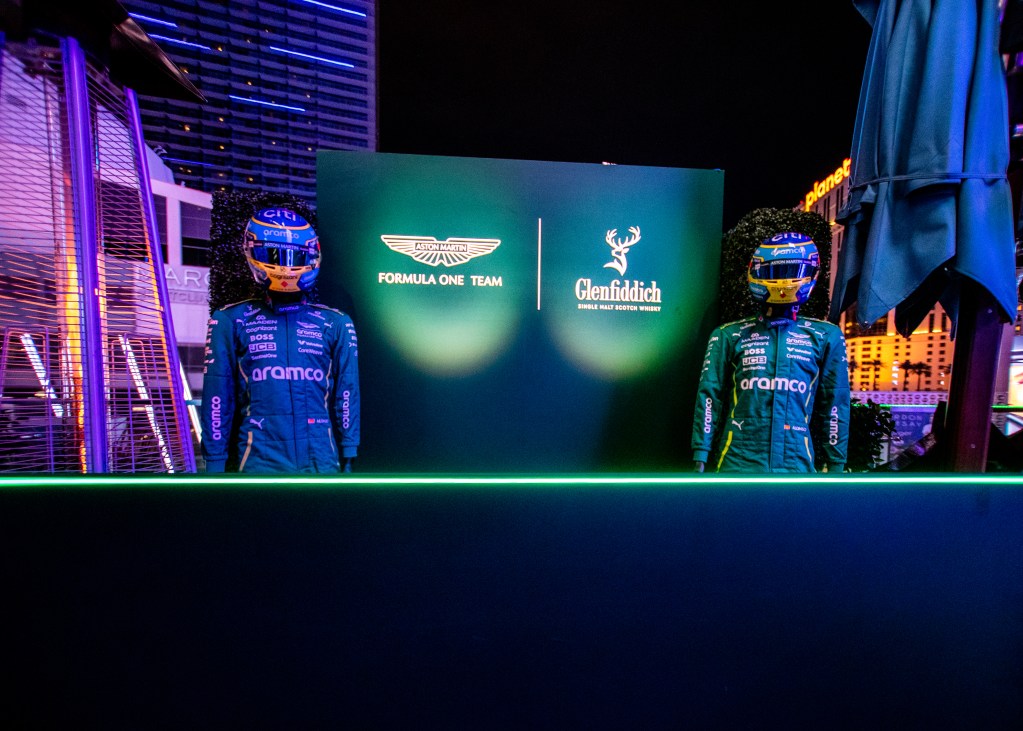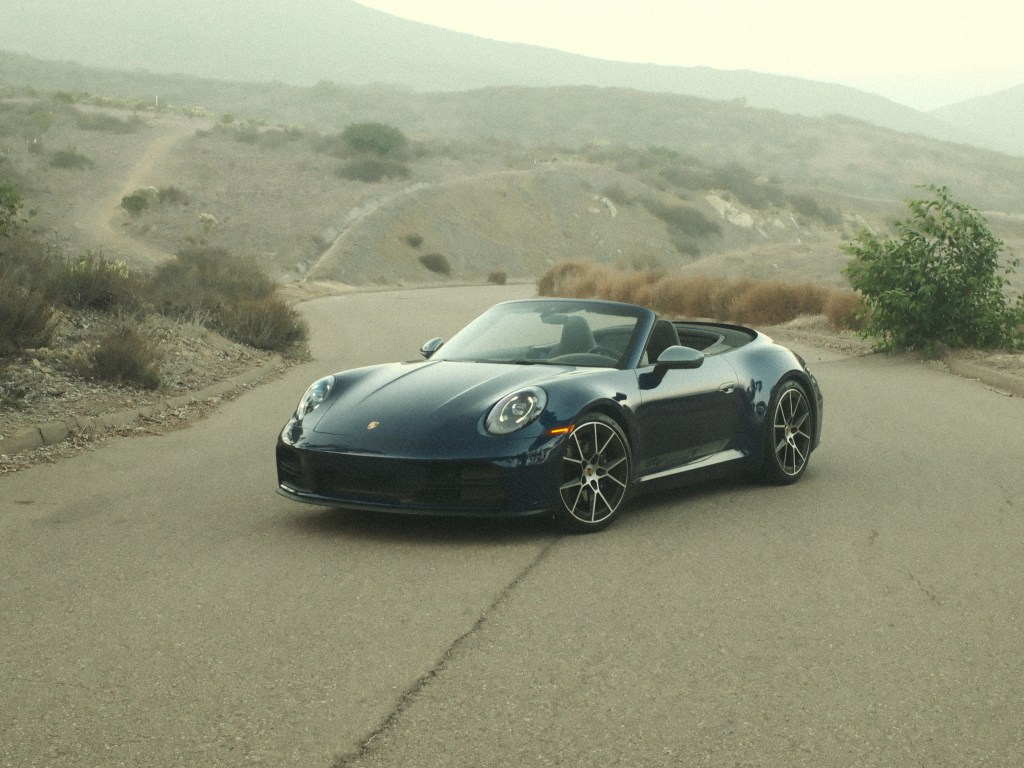Interview: 2015 TED Fellow eL Seed
The nomadic street artist on creating human connections through his distinctive Arabic calligraphy-based graffiti

Born and raised in Paris to Tunisian parents, graffiti artist eL Seed has left his mark all over the world (from the Jara Mosque to canyons to Louis Vuitton scarves), by spray-painting universal messages that funnily enough, the majority of viewers will not be able to decipher without a little help. eL Seed merges traditional Arabic calligraphy with the freestyle, guerrilla nature of modern graffiti. His murals—which take their geographic location into context—relay their ideas on a deeper level than just language; their movement, shapes, colors and more splashed onto a wall capture the viewer’s attention and asks them to open their mind. “Arabic script speaks to your soul before it reaches your eyes,” the artist tells us a few days ago from Doha, where he is currently based at the moment. Yesterday, he spoke on stage in Vancouver, presenting his work as a 2015 TED Fellow.
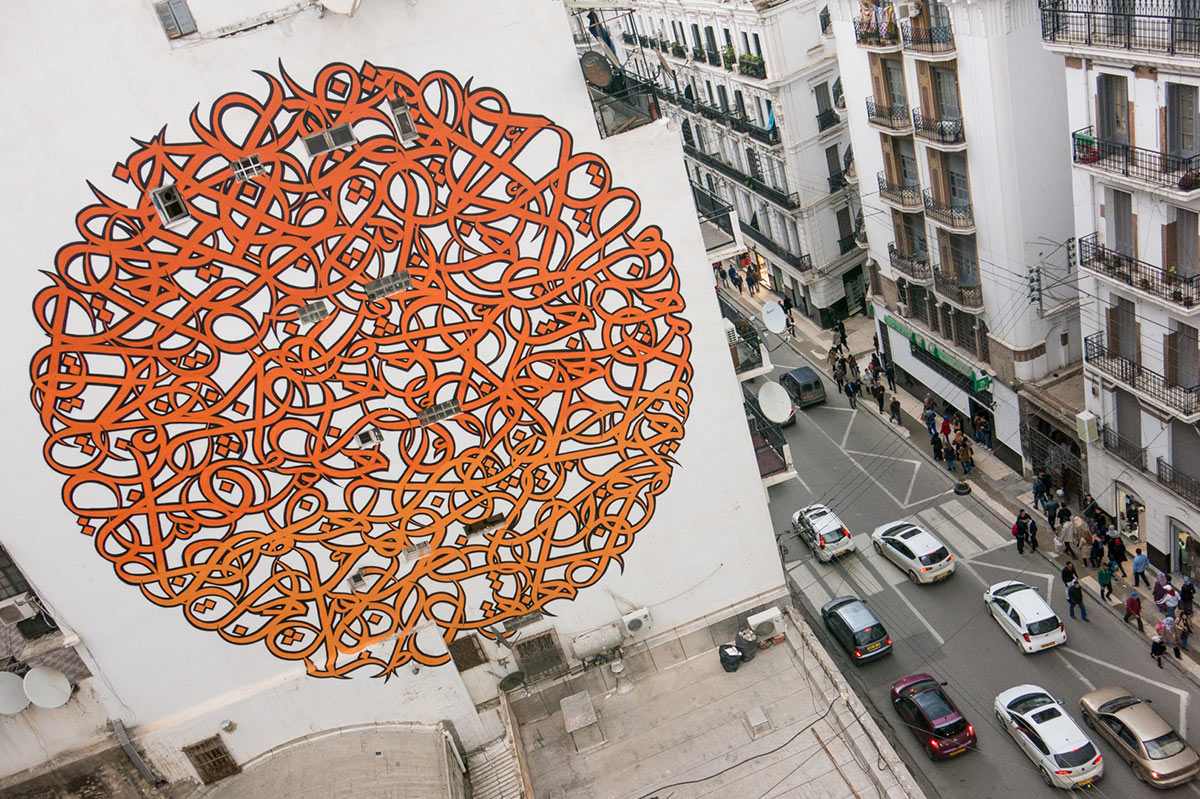
“I’m a street artist, I paint in Arabic, and I’m Tunisian,” says eL Seed, reminding us that the Arab Spring was born in Tunisia. “So people think that the only thing I write is about revolution. Why can’t you have Arabic script in [foreign] places and accept it as a normal thing, without thinking this is a call for jihad?” He contrasts it to the way that English can be found around the world, even on his microwave in Doha, and taken for granted. In the same way, he hopes to separate Arabic from its misrepresented ties to the religious and radical and use it instead to spread messages of empathy, hope, understanding and more through the democratic channels of graffiti.
Everything that I do has a message. I try to get inspiration from the place where I’m painting; I try to bring messages that are relevant to the people of the place.
The former b-boy and business consultant (who quit that job the day before his daughter was born) took his name from a 17th century French play his class was reading in school, “Le Cid” by Pierre Corneille. “Our teacher was telling us ‘Le Cid’ comes from the Arabic word ‘el Sayed,’ which means the man. And at this time, I was starting graffiti and I didn’t have a name. Then I was like, ‘I’m the man!’ and called myself ‘eL Seed.’ Simple as that.”
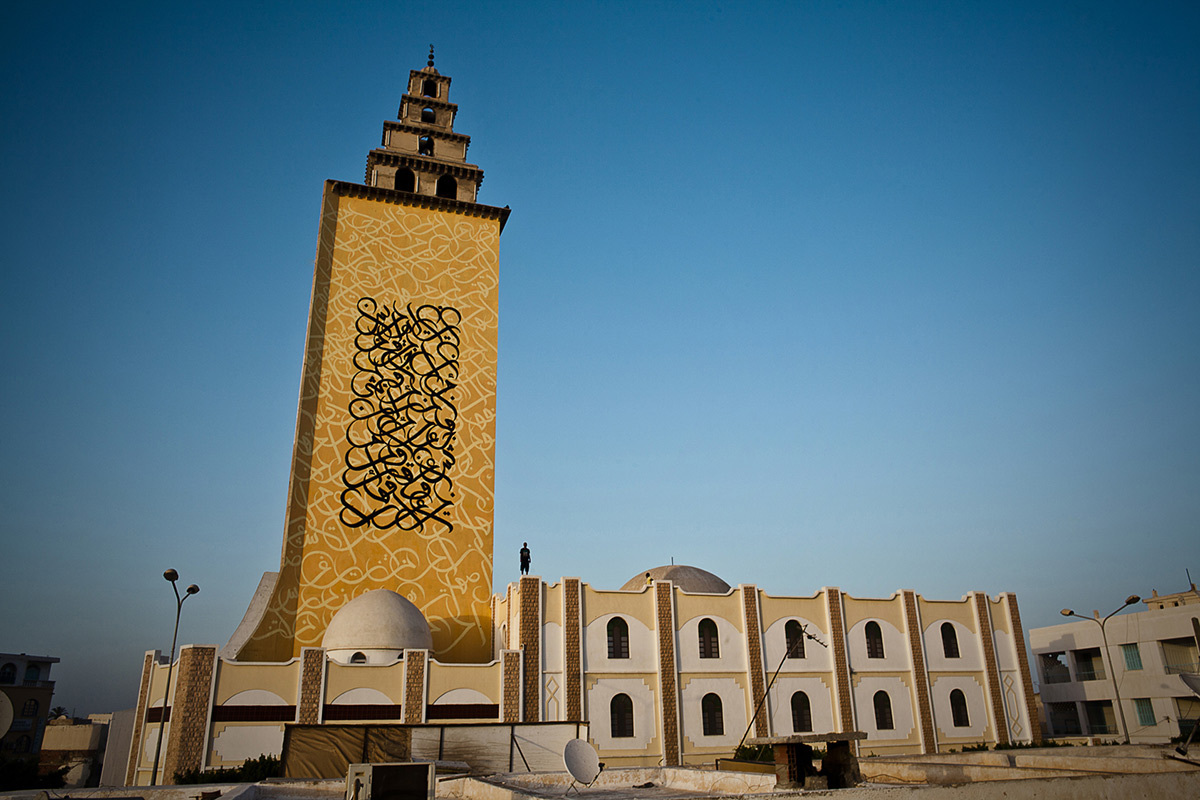
“Everything that I do has a message. I try to get inspiration from the place where I’m painting; I try to bring messages that are relevant to the people of the place,” says eL Seed. “For example, if I paint in Korea, I’m not going to use a poem by Baudelaire. I try to get inspiration from the place where I’m painting.” Interestingly, eL Seed often takes inspiration from books or poems for what he writes, instead of traditional commentary. He continues, “I think painting in the street is already a political act. You’re painting in a public space; you’re addressing something to the people. And then what you write—it’s a political act because you have a responsibility to the community. But I’m really against all the cheesiness of writing things like ‘Freedom to the People.'”
Every wall that I painted was not planned in advance; only one wall—the house of my grandparents.
eL Seed is full to the brim with amazing stories of real-life human connections while painting his works around the world—whether its being arrested by the local military (then later invited to one of their weddings) or offered sandwiches by curious bystanders. “I think the coolest thing about what I do is not the painting,” he says. “It’s the crazy human experience you can have.” One example: when in Rio de Janeiro last September, he went to the Vidigal favela. “At the top of the hill, I see this amazing rooftop—brand new, white. You never find a white rooftop. I started painting this poem from this [Brazilian] writer from one of the favelas, Gabriela Torres Barbosa. I did my piece, took my picture and I left.” He returned straight to Dubai, and two days later, he woke up to his phone buzzing with notifications. It turns out that the respected Brazilian artist and photographer Vik Muniz (who in fact, gave his own TED talk in 2007) had Instagrammed a photo of eL Seed’s art, thanking the “unidentified artist” for his beautiful tag. eL Seed had unknowingly painted the rooftop of a new art school that Muniz was building in the favelas.
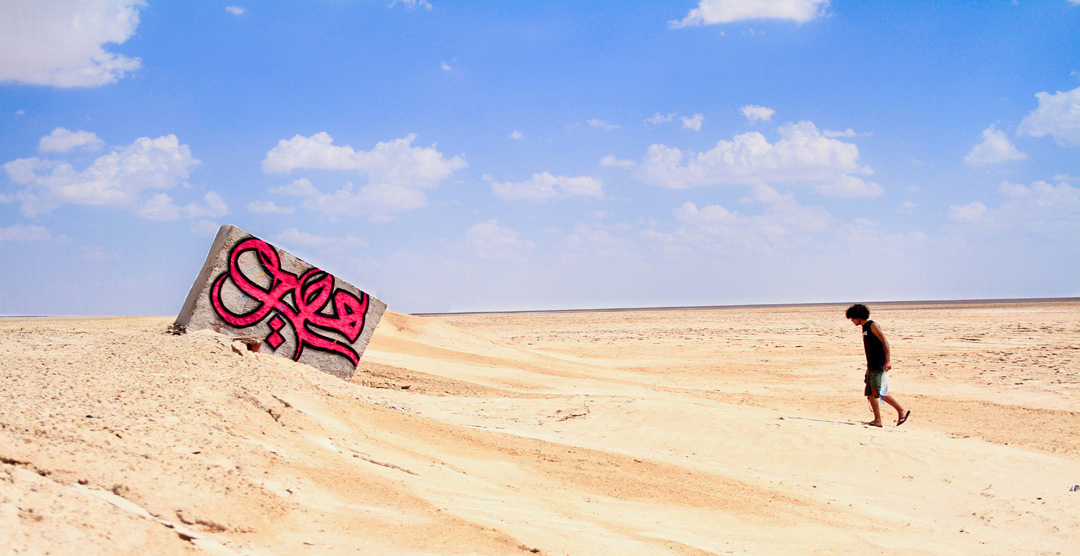
A major—a very personal—project for eL Seed in the last year was completing “Lost Walls,” a month-long road trip through his motherland, Tunisia. Traversing the country from north to south, east to west, he and his team visited forgotten places, bringing attention to them and beautifying them through graffiti. “It was really spontaneous,” he says. “Every wall that I painted was not planned in advance; only one wall—the house of my grandparents.”

One memorable experience involves the Tunisian city of Tataouine—the same one that inspired George Lucas’s fictional planet Planet Tatooine in his Star Wars series. “There’s a fake city called Planet Tatooine in Star Wars, and there is a real city called Tataouine in south Tunisia,” says eL Seed. “And Tataouine has more than 155 castles; only 11 of them are preserved by the authorities. the rest are falling apart.” Lucas built a film set in the middle of the Tunisian desert near Algeria (not even close to Tataouine)—and after filming was complete, the nearby city of Nafta asked him not to destroy it, and leave it behind, as to attract future tourists. “When you [search online for] places to visit in south of Tunisia, the first thing that comes up is Star Wars—a fake film set built in the desert of Tunis,” says eL Seed, angered that the region would promote this instead of its own rich history that leads back to the Roman times. “They reduce our heritage.”
I would love to do something with a ballet dancer. The way they dance, the way they move, I feel like they are throwing letters; their movements are the same shape of my letters.
So he visited the Star Wars set in his mind plan to paint over it. “I thought I would find a big Star Wars sign, a Chewbacca welcoming you, with the music of the movie and everything. But it was empty. Nothing.” Surprised by how dead the area was, he stumbled across an old man laying down inside one of the houses, who had no qualms about eL Seed painting, even in the middle of the day. “So I wrote, ‘I will never be your son’ in Arabic,” he says. “This is not my heritage. You’re not part of my culture or my history. I hope that people would maybe know that this place exists in Tunisia, but then visit the real heritage that we have in Tunisia.”

“There is a lot of stuff that has changed,” says eL Seed, reflecting upon his art thus far. “The style, the scale of the work, the medium that I’m using; but one thing that I try to keep—the most important thing—is the love of it. I try to always have the same excitement when I paint a wall; I have the same excitement as I used to have when I started painting. I remember when I used to go paint, I was so scared–to fail, to do something shitty, and I used to prepare so much in my head. I remember at some point my stomach hurt so much like I was going to an exam. I didn’t lose that; that’s the funny thing.” On future ventures, he muses, “I would love to do something with a ballet dancer. The way they dance, the way they move, I feel like they are throwing letters; their movements are the same shape of my letters.”
Lead image by Josh Rubin, all others courtesy of eL Seed


